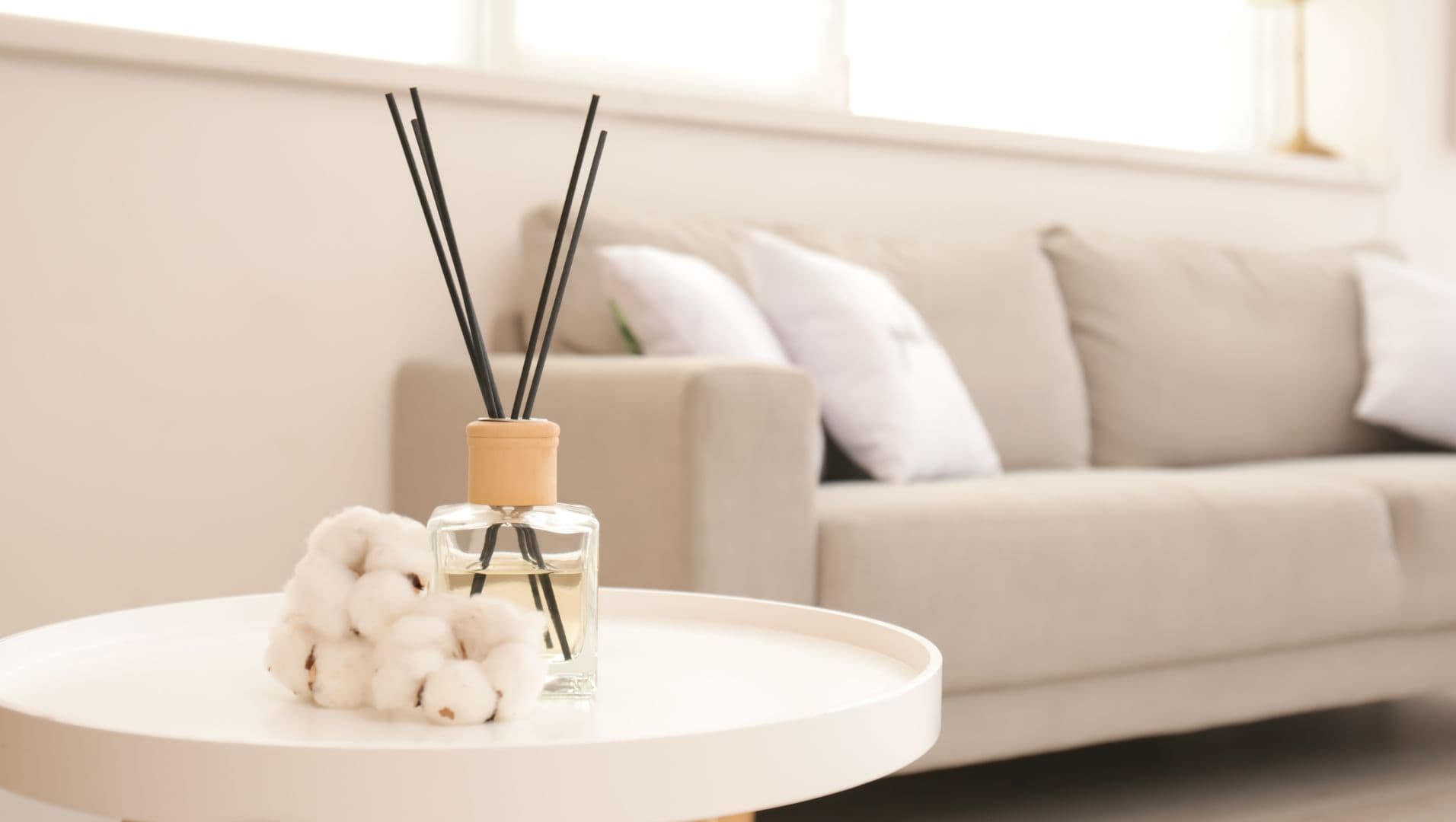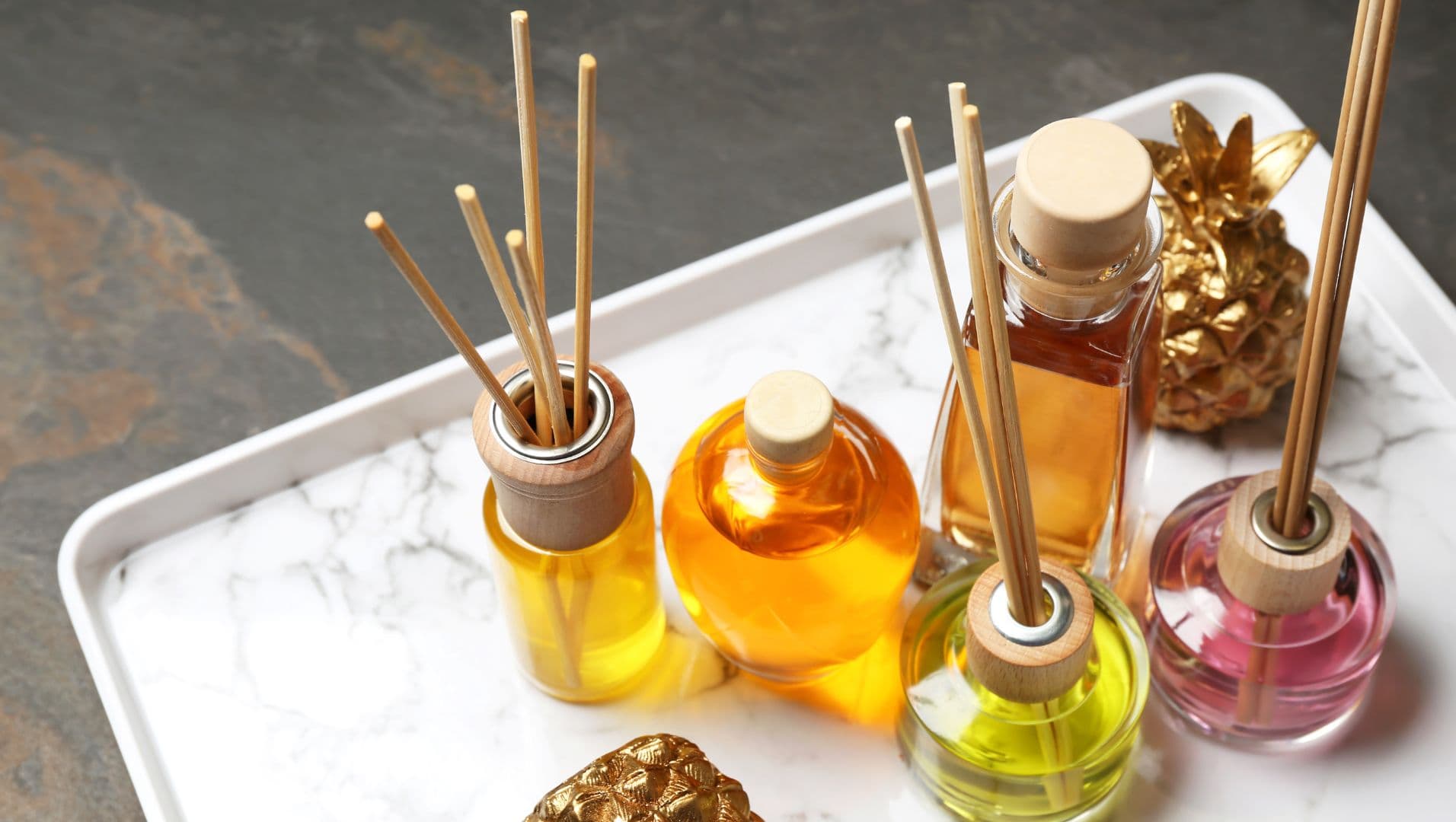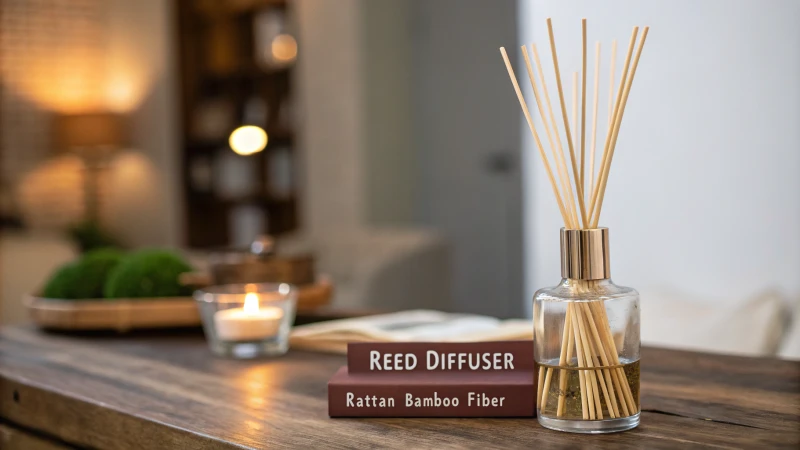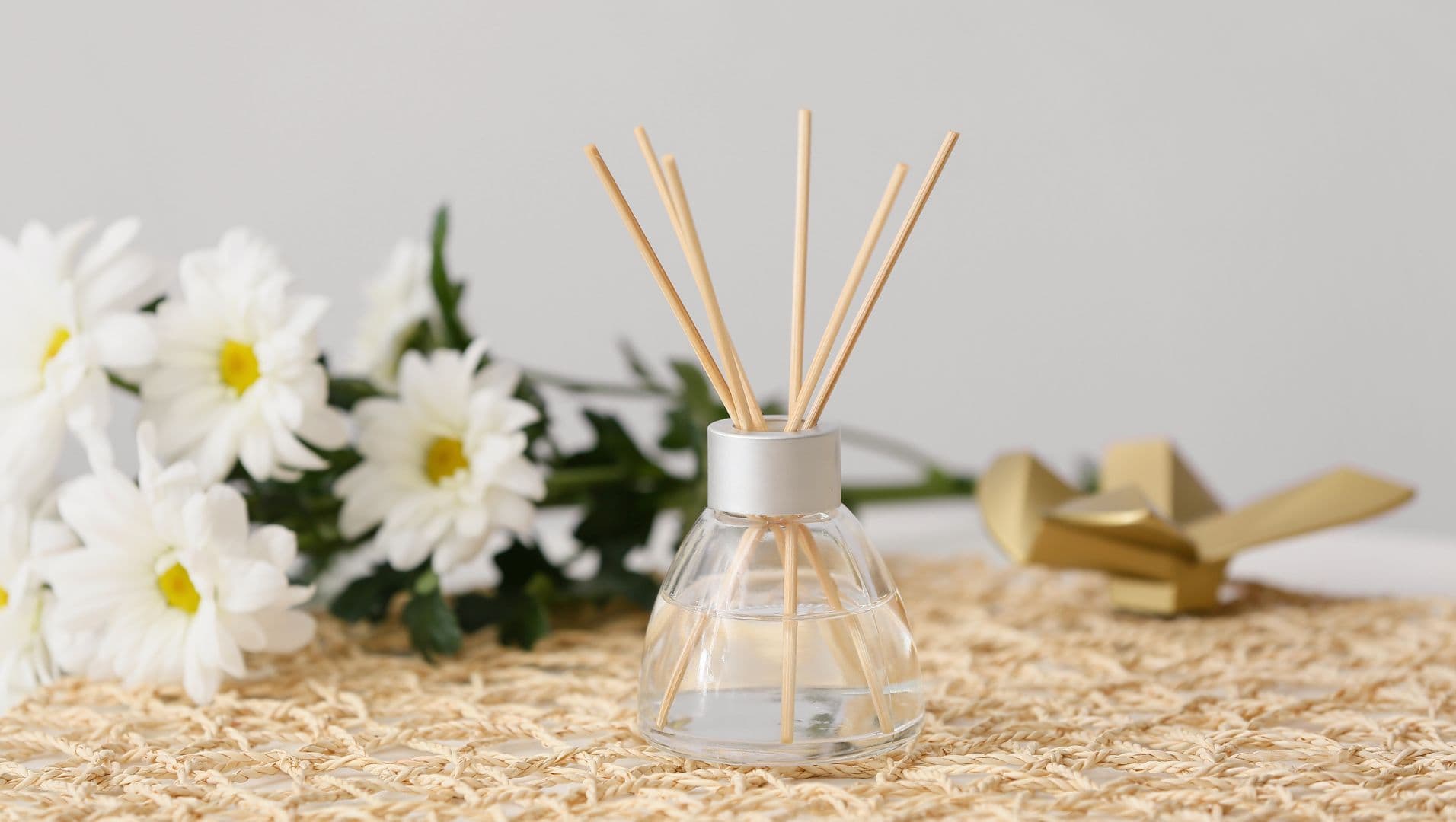
Want to turn your home into a lovely-smelling retreat? Look into how the perfect reed diffuser brings a fresh atmosphere to your space!
To have a pleasant smell in your diffuser, choose reeds from natural materials like rattan or bamboo. These reeds work well to absorb and send out scents. Their porous nature helps your space stay welcoming and fragrant. Natural reeds keep the air smelling good.
I have always loved returning home to a place that smells wonderful. I remember lighting a candle for the first time. It felt like warmth wrapped the entire room. Fragrance really holds this magic. Choosing the proper reeds increases this feeling. The top reeds for diffusers usually use natural materials. Rattan or bamboo work well. Their porous nature allows them to absorb the scent. They then release it slowly. This creates a welcoming atmosphere. The aroma lasts throughout your space.
Maybe you wonder how different reeds change your experience. Stay tuned! I will provide tips on picking the right ones. Learn how to get the best out of your diffuser.
Natural reeds like rattan enhance fragrance diffusion.True
Natural reeds, such as rattan, are porous and absorb scents effectively, improving fragrance release in diffusers.
Synthetic reeds are better than natural for scent release.False
Synthetic reeds do not absorb and release fragrance as effectively as natural materials like rattan or bamboo.
What Materials Are Commonly Used in Diffuser Reeds?
Do you wonder about the things inside those lovely diffuser reeds? Let’s explore the materials that bring your favorite scents to life. Materials like rattan and bamboo each have their own unique charm. They also offer different benefits.
Diffuser reeds often use materials like rattan, fiber and bamboo. Rattan is very popular because it is sustainable. It also spreads scents efficiently. Fiber reeds spread scents well too because they have a larger surface area.

Understanding Diffuser Reeds: A Simple Guide
When I discovered diffuser reeds, I felt amazed. These reeds fill a room with scent just by sitting quietly in a corner. The material of the reeds plays a big part in this magic. Choosing the right one can probably change your space. Each reed type has its own special way of spreading scent.
Here are some common materials used in diffuser reeds:
Rattan Reeds
Rattan holds a special place for me. It’s a favorite material for diffuser reeds. I remember using rattan reeds in my home. They soaked up the fragrance oil and gently filled the air with scent. It felt almost magical. Rattan is durable and sustainable. It’s great for eco-friendly people who do not want to give up style.
- Pros: Eco-friendly, spreads scent well, lasts long.
- Cons: Becomes wet and probably needs replacing sometimes.
Learn more about natural materials in home decor1 for extra insights.
Fiber Reeds
Fiber reeds seemed like a lesser choice compared to rattan at first. These synthetic reeds bring benefits too. Their larger surface area spreads scent better. They are perfect for those wanting a strong scent experience.
| Material Type | Absorption Rate | Durability | Eco-Friendliness |
|---|---|---|---|
| Rattan | High | High | Yes |
| Fiber | Moderate | Moderate | Varies |
- Pros: Greater scent spread and steady performance.
- Cons: May be less eco-friendly, depending on the material.
For a better grasp of scent diffusion science2, explore further.
Bamboo Reeds
Bamboo reeds are becoming more popular and I understand why. Their stylish look caught my eye during shopping. They work just as well as others. Bamboo is a renewable resource. Choosing them feels good because they are beautiful and kind to the planet.
- Pros: Nice design, sustainable, effective.
- Cons: Cost more than rattan or fiber; for me, it’s worth it for looks and eco-friendliness.
Learn how to choose reeds for your DIY projects in this guide on DIY reed diffusers3.
Conclusion on Materials Used
Each material has unique benefits and affects your diffuser’s performance. Exploring these options taught me this. I love trying home fragrances! Try different types to find the perfect one for your space; you might find a new favorite scent!
Rattan reeds are the most eco-friendly option for diffusers.True
Rattan is durable and sustainable, making it an eco-friendly choice for diffuser reeds.
Fiber reeds provide better fragrance diffusion than rattan reeds.False
Fiber reeds have a larger surface area, enhancing fragrance diffusion compared to rattan.
How Do Different Reed Types Affect Fragrance Strength?
Do you ever think about how different reeds in your diffuser alter the entire scent experience in your room? Let’s explore the fragrant world of reeds together!
Different reed types change how strong a fragrance smells. This happens because they soak up liquid differently and have different tiny holes. Rattan reeds usually give off a stronger scent. They are often better than fiber or bamboo reeds. Rattan probably really improves your overall experience.

Understanding Reed Materials
The type of reed used in diffusers can significantly influence how well the fragrance is released into the air. Different reeds have varying levels of porosity, density, and absorption capability, all of which contribute to their ability to draw up fragrance oils and disperse them effectively. For example, rattan reeds are known for their high absorption rate, which can lead to a stronger scent throw compared to other materials.
Comparison of Common Reed Types
Here’s a table that summarizes key characteristics of popular reed types used in diffusers:
| Reed Type | Absorption Rate | Fragrance Strength | Durability |
|---|---|---|---|
| Rattan | High | Strong | Long-lasting |
| Fiber | Medium | Moderate | Moderate |
| Bamboo | Low | Weak | Durable |
Rattan reeds are often favored for their ability to hold more fragrance oil, thus providing a longer-lasting and more potent scent experience. In contrast, bamboo reeds might be less effective in scent diffusion but can add an aesthetic value to home décor.
Factors Affecting Fragrance Release
Apart from the type of reed, several factors influence fragrance strength:
- Reed Size: Thicker reeds may absorb more oil but could also restrict airflow.
- Oil Quality: The quality of the fragrance oil plays a crucial role; higher quality oils often diffuse better.
- Environmental Conditions: Temperature and humidity can affect how quickly the fragrance is released into the air.
To optimize your diffuser’s performance, consider experimenting with different reed types and placements. You can find out more about enhancing your diffuser’s effectiveness in our guide on maximizing fragrance strength4.
Rattan reeds provide stronger fragrance than bamboo reeds.True
Rattan reeds have a high absorption rate, allowing for better scent diffusion compared to bamboo, which has a low absorption capacity.
All reed types have the same fragrance strength.False
Different reed types vary in their absorption and porosity, leading to different fragrance strengths; thus, this claim is false.
What Tips Can Help Maximize Your Diffuser’s Effectiveness?
Have you ever walked into a room and felt a soothing scent around you that instantly improves your mood? I know I have! Using your diffuser the right way probably transforms your aromatherapy experience into something truly magical. Let’s explore some practical tips that really help you get the most from your reed diffuser.
To enhance your diffuser’s effectiveness, focus on its best placement, consistent upkeep, using good-quality oils and trying different scent mixtures. These actions lead to better scent spreading and longer lasting fragrance, making a more enjoyable aromatherapy space.

Optimal Placement for Your Diffuser
To get the best from your diffuser, place it in the right spot. Ideally, position it in areas where air circulation is optimal, such as near an open window or in a central room.
Consider avoiding corners or enclosed spaces where fragrance can get trapped. Instead, try placing it on a coffee table or a bookshelf at nose level for a more intense aroma.
For further insight on the best spots, check out our guide on fragrance diffusion strategies5.
Maintenance Practices for Longevity
Clean your diffuser regularly to keep it working well. A simple solution of water and vinegar can work wonders for cleaning. Here’s a quick cleaning routine:
| Step | Action |
|---|---|
| 1 | Empty the diffuser |
| 2 | Add equal parts water and vinegar |
| 3 | Let it sit for 30 minutes |
| 4 | Rinse thoroughly |
| 5 | Refill with fresh essential oils |
For more maintenance tips, visit our page on essential oil care6.
Enhance Fragrance Intensity
Use good oils for a lovely scent. To boost the scent intensity from your diffuser, consider these tips:
- Use High-Quality Oils: Always opt for pure essential oils without synthetic additives.
- Adjust Reeds: Flip the reeds every few days to refresh the scent. The more reeds you use, the stronger the fragrance.
- Consider Room Size: For larger rooms, you may need more than one diffuser to achieve desired aroma levels.
Explore more about selecting oils in our article on choosing the right essential oils7.
Experiment with Blending Scents
Try different scent mixes! Mixing different essential oils can create unique and pleasant aromas that enhance your space. However, it’s important to choose complementary scents. Popular combinations include:
- Lavender & Eucalyptus for relaxation.
- Citrus & Mint for energizing vibes.
For guidance on blending oils, refer to our comprehensive guide on scent blending techniques8.
Placing a diffuser near an open window enhances effectiveness.True
Optimal placement allows better air circulation, improving fragrance distribution throughout the room.
Cleaning your diffuser every month is sufficient for maintenance.False
Regular cleaning every two to three weeks is recommended to prevent oil buildup and maintain performance.
Are There Eco-Friendly Options for Diffuser Reeds?
Finding eco-friendly diffuser reeds is more than a choice. It is a step toward a healthier home and planet. I invite you to explore natural materials with me. These materials greatly improve our living spaces. They also align with our values of sustainability.
Absolutely! Choose from eco-friendly options like natural rattan, bamboo and wood from responsible sources. These materials better air quality. They also align with sustainable practices. Enjoy beautiful fragrances without guilt.

Understanding Eco-Friendly Diffuser Reeds
When I began to create a sustainable home, I was amazed by how many everyday items offer eco-friendly choices. One item was the diffuser reeds I used for relaxing scents. I learned that traditional reeds might release harmful chemicals into the air. This was a big surprise!
As I explored more, I discovered different eco-friendly materials for diffuser reeds. Traditional reeds often come from synthetic sources, polluting indoor air. This made me search for better options that are good for home and the earth.
Eco-friendly alternatives typically include:
- Natural Rattan: This comes from the rattan palm. It’s not only biodegradable but renewable too. A great pick for caring consumers.
- Bamboo: I appreciate bamboo because it grows very fast and remains sustainable. It spreads fragrance well too!
- Wooden Reeds: Made from sustainably collected wood, these reeds bring rustic charm to any decor while being eco-friendly.
Switching to these choices improves my home atmosphere and supports sustainable living.
Benefits of Using Eco-Friendly Reeds
After the switch, I’ve noticed many benefits:
| Benefit | Description |
|---|---|
| Healthier Air Quality | Natural materials do not emit harmful VOCs (volatile organic compounds). |
| Sustainability | Sourced from renewable resources, contributing to environmental health. |
| Aesthetic Appeal | Natural reeds often have unique textures and colors that enhance decor. |
| Biodegradable | These materials break down naturally, reducing landfill waste. |
Eco-friendly choices help us positively impact our environment while enjoying delightful home scents.
How to Choose Eco-Friendly Diffuser Reeds
When selecting eco-friendly reeds, consider the following factors:
- Material Sourcing: I look for brands open about their sourcing practices. It’s good to see sustainability labels.
- Certifications: Checking eco-certifications helps me trust their environmental promises.
- Fragrance Options: I choose natural, chemical-free fragrances for a complete experience.
- Supplier Ethics: I prefer suppliers who follow ethical practices.
For more information on selecting sustainable products, check this guide on choosing eco-friendly home fragrances9.
DIY Eco-Friendly Reed Diffuser Solutions
Feeling crafty? Creating your own reed diffusers can be very rewarding! Here’s an easy recipe to make one at home:
Ingredients Needed:
- 1/2 cup of carrier oil (like almond or jojoba)
- 1/2 cup of essential oils (like lavender or eucalyptus)
- Natural reeds (rattan or bamboo)
- A glass jar or vase
Instructions:
- Mix the carrier oil and essential oils in your jar.
- Place the reeds in the mixture to absorb the oils.
- Turn the reeds every few days to refresh the scent.
This DIY method offers customization and keeps all parts eco-friendly. For more ideas, check out DIY eco-friendly home products10.
I enjoy filling my home with pleasant scents while living a lifestyle that respects our planet.
Eco-friendly reeds improve air quality in homes.True
Natural reeds do not emit harmful VOCs, promoting healthier indoor air quality.
Bamboo reeds are not sustainable for diffusers.False
Bamboo is a fast-growing, renewable resource making it an eco-friendly option for diffuser reeds.
Conclusion
Explore the top natural reeds for diffusers, including rattan and bamboo, to enhance fragrance diffusion and create a pleasant atmosphere in your home.
-
This link provides valuable insights into selecting the best materials for diffuser reeds and enhancing fragrance diffusion. ↩
-
Learn about the scientific principles behind scent diffusion and how materials affect it. ↩
-
This guide offers practical advice on creating your own reed diffusers using various materials. ↩
-
Discover valuable insights on reed types and their effect on fragrance strength, helping you choose the best option for your home. ↩
-
Discover expert advice that can enhance your diffuser experience significantly by optimizing its use. ↩
-
Learn how proper maintenance can prolong the life and effectiveness of your diffuser. ↩
-
Find out which essential oils work best together to create delightful aromas in your home. ↩
-
Get insights into different fragrance families and how to mix them effectively. ↩
-
Learn about the benefits of using natural materials in home fragrances and how they impact your health and environment. ↩
-
Get inspired by creative DIY ideas to make your own eco-friendly reed diffusers at home. ↩

